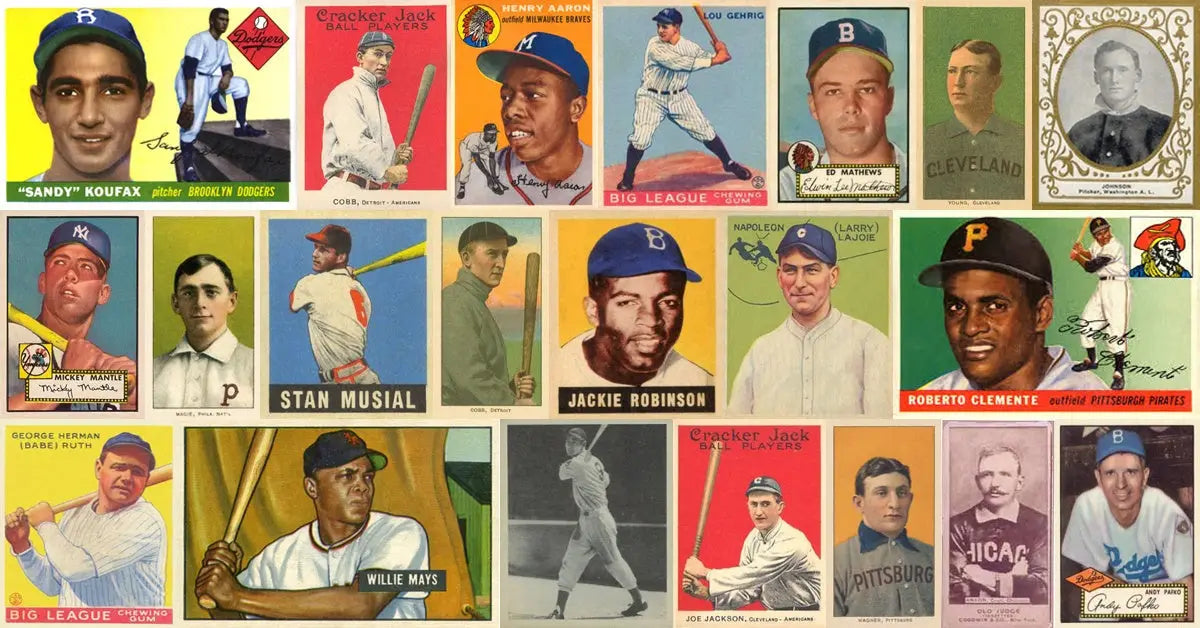
How To Tell If Baseball Cards Are Worth Anything?
Share
Are you a passionate baseball fan eager to uncover the treasures hidden within your baseball card collection? Well, you’ve struck gold with this article! We’re diving deep into the fascinating world of baseball card appraisal—where every corner of your collection could potentially reveal gems worth their weight in gold. Whether you’ve been collecting for years or just getting started, understanding how to assess the value of your cards will elevate your hobby to exhilarating new heights.
For decades, baseball cards have captivated collectors and enthusiasts alike, with some rare gems fetching jaw-dropping prices at auctions. But what makes a card truly valuable? Fear not – our comprehensive guide will unlock the secrets of appraising your cards by examining key factors such as rarity, condition, and market demand. By the end of this exhilarating journey, you'll not only be empowered to evaluate your own collection but might just discover those elusive mint condition cards that are all the rage among collectors.
So, go ahead and dust off those shoeboxes brimming with memories and artifacts of baseball history. Prepare to embark on an exciting adventure where your collection might just hold hidden riches waiting to be discovered!

How to Tell if Baseball Cards Are Worth Anything?
Baseball cards have held a treasured status as collectibles for decades, luring devoted collectors and curious newcomers alike. One pivotal aspect of this beloved hobby is determining the value of the cards within your collection. So, how can you ascertain whether those cards tucked away in your attic (or that special storage box) are worth anything? In this informative guide, we will dissect the crucial elements that determine the value of baseball cards and arm you with invaluable knowledge to assess their worth accurately.
Historical Significance and Rarity
The historical significance and rarity of a baseball card are monumental in establishing its value. Cards that feature legendary players or spotlight iconic moments in baseball history are often at the top of collectors' wish lists. Scarcity also drives up value; think limited editions, cards from specific eras, or even those quirky misprints that collectors covet. Understanding the rich tapestry of history surrounding the card you possess will enlighten you about its significance and rarity.
When evaluating a card's rarity, consider production numbers, market availability, and the overall condition of the card. The fewer cards produced, the greater the value tends to be. Plus, if a card is challenging to locate in pristine, mint condition, it may skyrocket in worth.
Condition and Grading
Condition is arguably the cornerstone of baseball card valuation. Enthusiastic collectors seek cards in excellent shape, as they are not only aesthetically pleasing but also trend to retain their value over time. Key aspects affecting condition include corners, edges, surface quality, and centering. Any imperfections—like creases, stains, or fading—can deliver a substantial blow to a card’s worth.
To accurately assess a card's condition, collectors often turn to professional grading services. Such agencies grade cards on a defined scale, providing a numeric rating that greatly affects market value. The most reputable grading company is Professional Sports Authenticator (PSA). Cards awarded higher grades indicate better condition, leading to increased perceived value, as even slight variations in grade can lead to dramatic price differences.
Momentous Player Achievements and Popularity
Player achievements and popularity also play critical roles in the valuation process. Cards featuring players who have achieved greatness or made unforgettable contributions to the sport naturally attract a larger pool of collectors. A prime example includes rookie cards of baseball legends or cards celebrating monumental milestones. Cards boasting Hall of Fame inductees and record-breakers command high market demand.
Popularity cannot be overstated—players with devoted fan bases are driving forces behind both demand and card values. Whether it’s a current superstar or a legend from another era, their influence reverberates throughout the collectibles market.
Market Demand and Trends
The ever-evolving landscape of the baseball card collectible market dictates the ultimate value of your cards. Prices can fluctuate based on several factors, including current trends, collector appetites, and broader economic conditions. A player’s extraordinary performance or newfound media buzz can cause card values to surge almost overnight.
The rise of online marketplaces has transformed how collectors buy and sell. Accessibility to a global market intensifies competition, meaning sought-after cards can realize staggering prices. Keeping a pulse on market trends, participating in card shows, and staying abreast of industry news will empower you to gauge your collection's value more astutely.
Research and Appraisal
Accurate value assessment hinges upon thorough research and possibly professional appraisals. Online resources, price guides, and collector forums are invaluable sources for ascertaining current market prices for specific cards. Assessment becomes clearer when examining similar cards and recent sales, offering insight into what collectors are willing to pay.
In certain instances, consulting professional appraisers or credible card dealers can yield precise valuations. These seasoned veterans possess a wealth of knowledge and experience in the card industry while helping navigate the complexities of value determination.
Preserving and Protecting Your Collection
Whether your baseball card collection boasts financial value or sentimental significance, protection must remain a priority. Quality card sleeves, binders, or storage boxes shield against moisture, light, and dust. Maintaining a cool and dry environment will help preserve your collection’s condition longer.
Investing in Vanity Slabs holders provides unparalleled protection for your valuable cards, ensuring they stay safe and well-preserved. Vanity Slabs offers an array of holders and accessories tailored to meet every collector's needs. Check out their innovative products at https://www.vanityslabs.com/.
In closing, possessing a thorough understanding of the criteria that dictate baseball card value is crucial for all collectors. By taking into account historical significance, rarity, condition, player legacies, and diligent research, you're better equipped to evaluate your baseball card collection. Don't forget the importance of proper preservation methods using high-quality holders and enjoy the thrilling hunt for hidden treasures within your prized collection.
